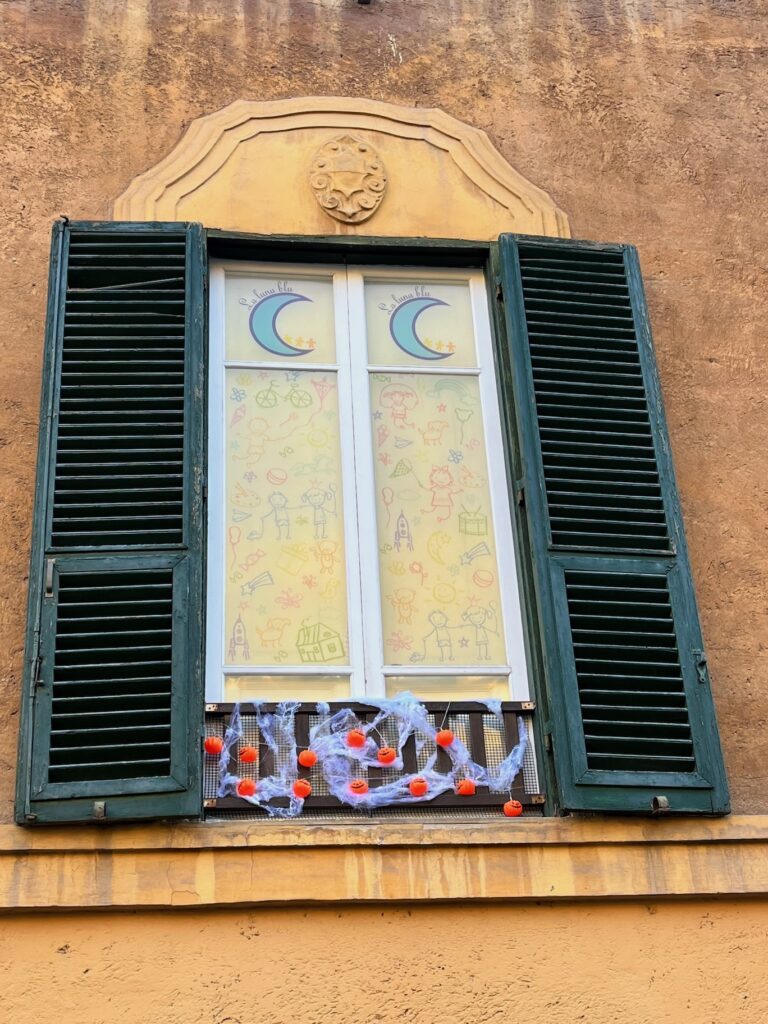
Halloween is a minor bit of a thing here, but what has seeped in is mostly due to the technicolor Level 11 effort that comes from the American tradition (which, of course, is not where Hallowe’en is rooted). In Italy, the larger focus is on All Hallows’ Eve which marks the start of the year that honors the dead (a “hallow” is a saint or holy person). November 1st is Ognissanti, or la Toussaint, or All Saints’ Day…and the following day (November 2nd) is All Souls’ Day. In short, this is a period where folks take time to go and visit the departed and honor their memories. So yes, the pumpkins are cropping up with greater frequency— but this still is a time of solemn remembrance in this part of the world.
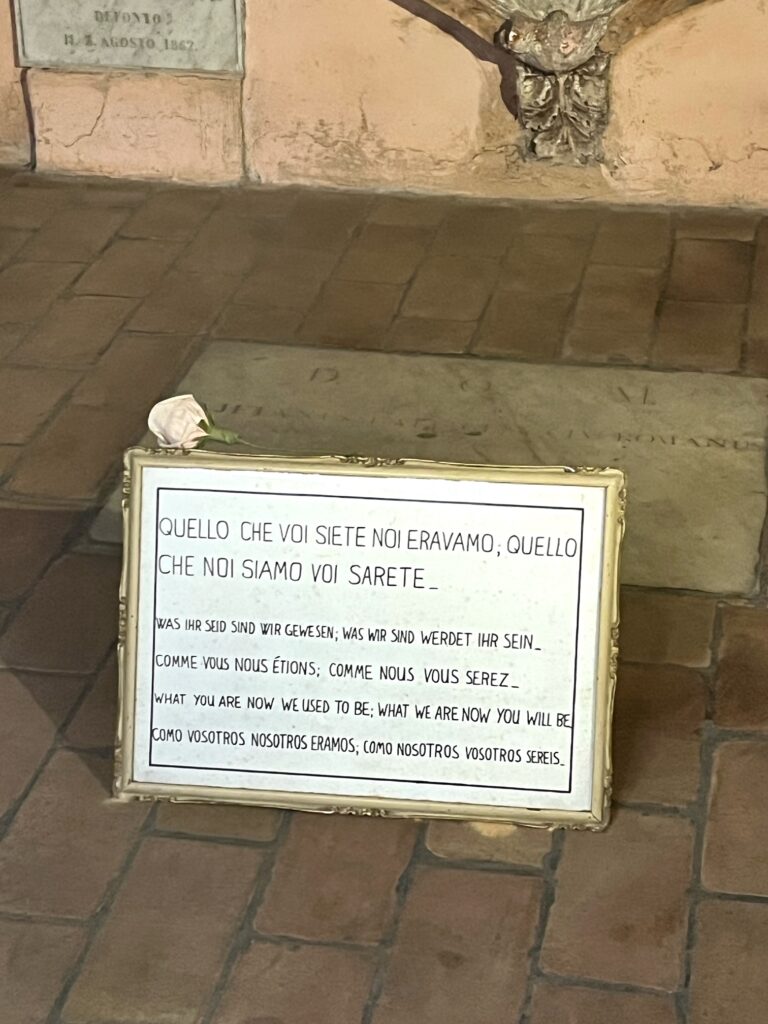
Much to the credit of my mother’s great imagination, I of course grew up on a steady diet of Halloween celebration. And so with this in mind, I felt like I should do something at least kind of spooky this weekend…more than just watch “It’s the Great Pumpkin, Charlie Brown” in Italian (which I now do). So this year I decided to check out a crypt that would seem appropriate for a period where the leaves are hogging the sidewalks and the nights are showing up even earlier.
In central Rome there is a 500 year old church called Santa Maria della Concezione dei Cappuccini. Underneath it houses a crypt that was built by Capuchin friars. I should note that there is also an interesting museum recounting the history of the Capuchin friars (and there is even a Caravaggio painting inside!)— but I would say that most of the people paying for entry are only here because of the crypt.
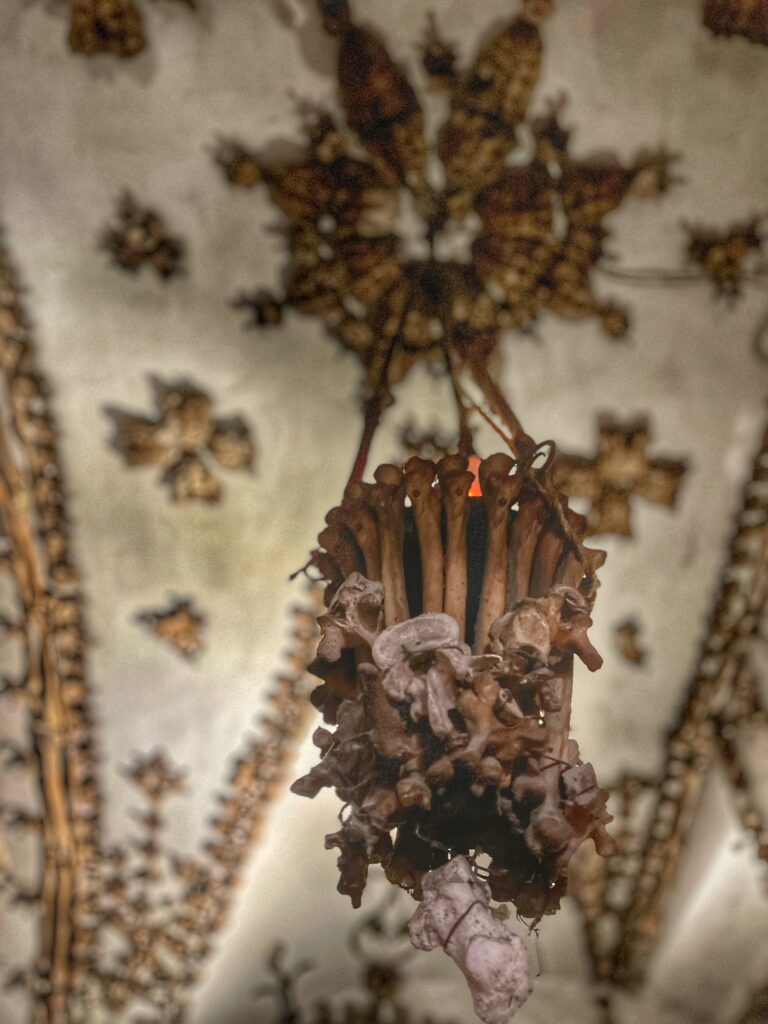
I’m not going to give you a walking tour, but I will start by noting that once you make your way down the short stairs to access the crypt, you are greeted by a hopelessly modest sign reminding you that what you are about to walk through— however unsettling— is what we are all ultimately bound for. What you are now we used to be; what we are now you will be. Shudder. Makes you want to walk straight for the gift shop where they sell fake plastic skulls on a decorative bracelet. But you don’t. Instead you place your antenna up and remember that this is what you came for.
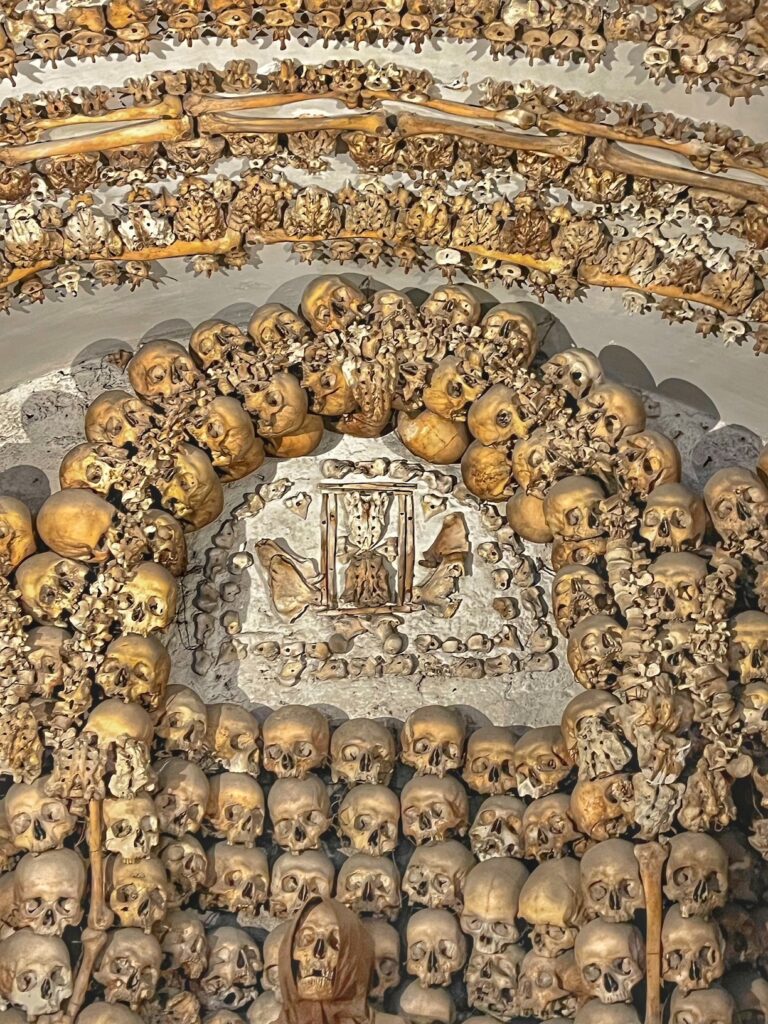
It is of course beyond settling to walk upon almost 4,000 deceased friars whose bones have now been reconstructed in an artistic manner to remind you of the great beyond. Indeed, as I read the placards (to include the one for this crypt, which points out that there are pieces of one’s pelvis and bones fashioned into an hourglass to remind one of passing time)…as I read them, my brain kind of emptied. Just about as empty as the thousands of skulls surrounded me in this crypt.
And so.
Once back outside of the crypt, it was a warm and sunny day in Rome. But I didn’t feel quite as warm or sunny as when I went in. The weight of what this weekend really focuses on abounded, and I didn’t exactly want to go back home with only interior decorations of spinal columns in my head. So I struck out for another historical site.
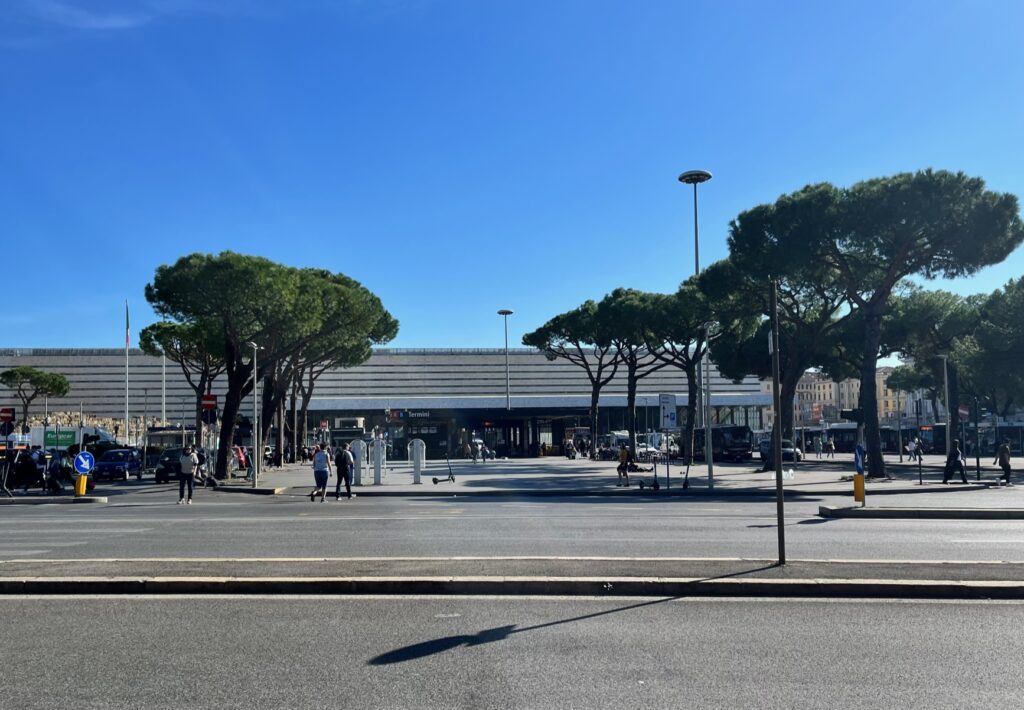
Just across from Termini, Rome’s main central train station, is the Terme di Diocleziano (or the Baths of Diocletian in English). These old terme, or Roman baths, were the largest ones in the world, and they were built around 300 AD. When I first got to Rome, I thought Termini train station was called thusly because it was a “terminus” of sorts. I was embarrassed to learn that this is definitely not so; it gets its name from the the baths and the “neighborhood” surrounding it. And this is where I wound up going.
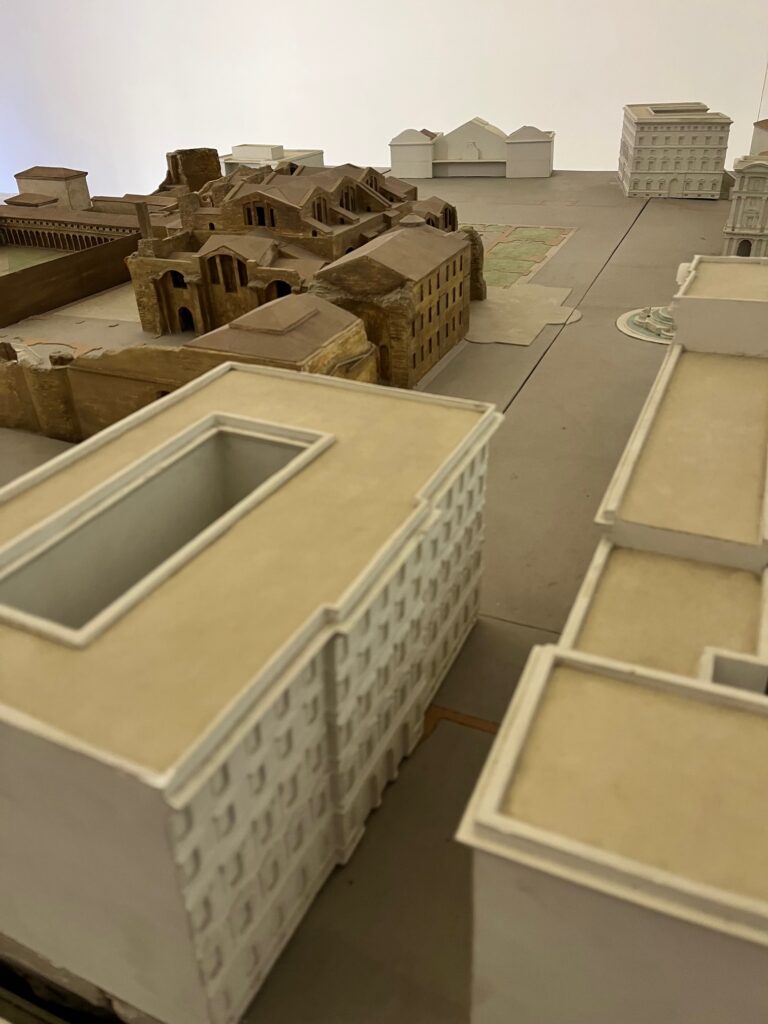
It is impressive to note that the skeleton of the baths are still standing, and anyone who has passed through Termini will undoubtedly see the walls of the core structure. Much like the rest of Ancient Rome, it has been incorporated int to the modern city. This includes the Basilica of St. Mary of the Angels and of the Martyrs, which was designed by Michelangelo and incorporates one of the old bathing chambers. Everywhere you step in Rome, old is cohabitating with the grumpy new. And this is why modern day residents can’t complain (too much) when there are never-ending works going on; there is simply a lot to do in order to maintain a semblance of harmony.
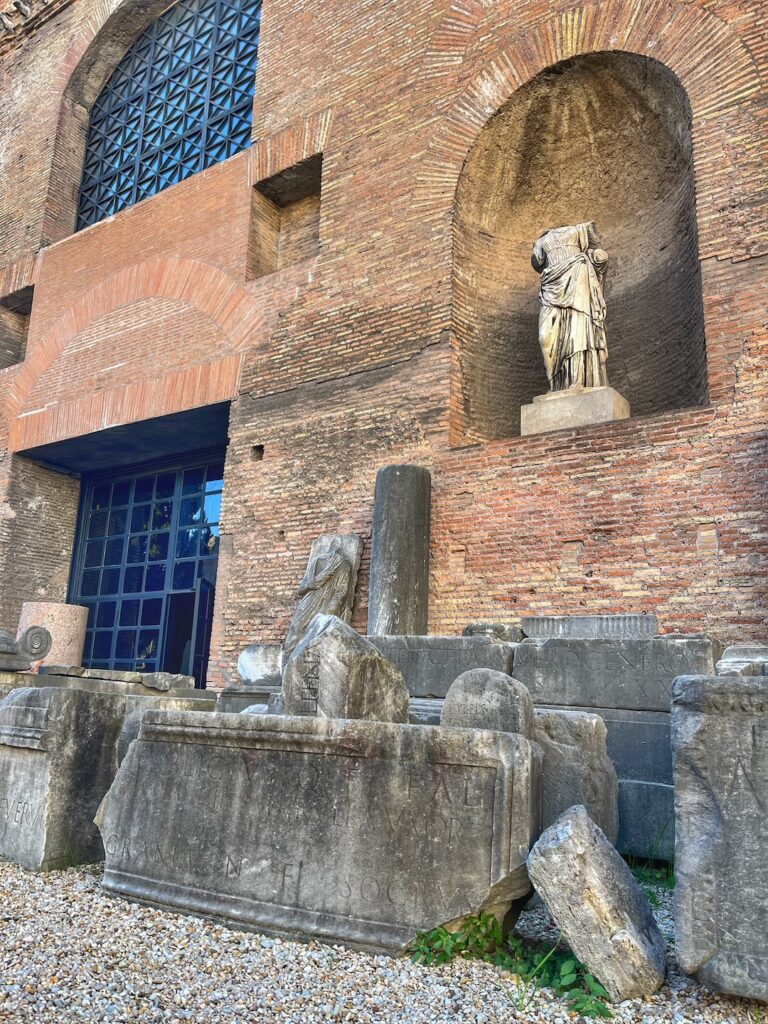
The exposed brick of the once-ornate bath walls now serve as containers for scores of very old finds. Funerary monuments, tablets, sculpture and public records are now scattered across the museum. There is so much to see, and so much to wrap your brain around…but at the same time, I found this kind of journey into the past far easier to stomach than the rapid journey through the decorative ossuary.
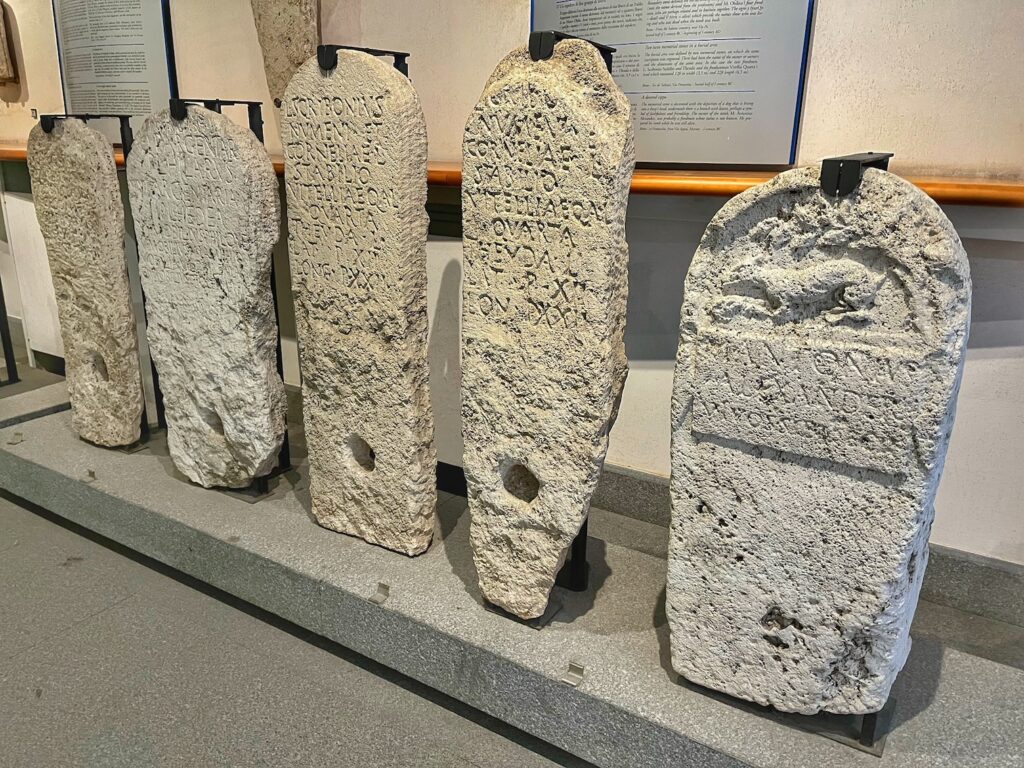
Just about all of what remains today is still here because it was carved into something highly durable. The stone, or marble or terracotta. As such, I got to observe an impressive number of tombstones- those of freedman adorned by carvings that have been interpreted as symbols of faithfulness and friendship. Tombstones from the first century BC, all discovered in places not far from Rome. The flesh and bones are long gone, but the markers remain.
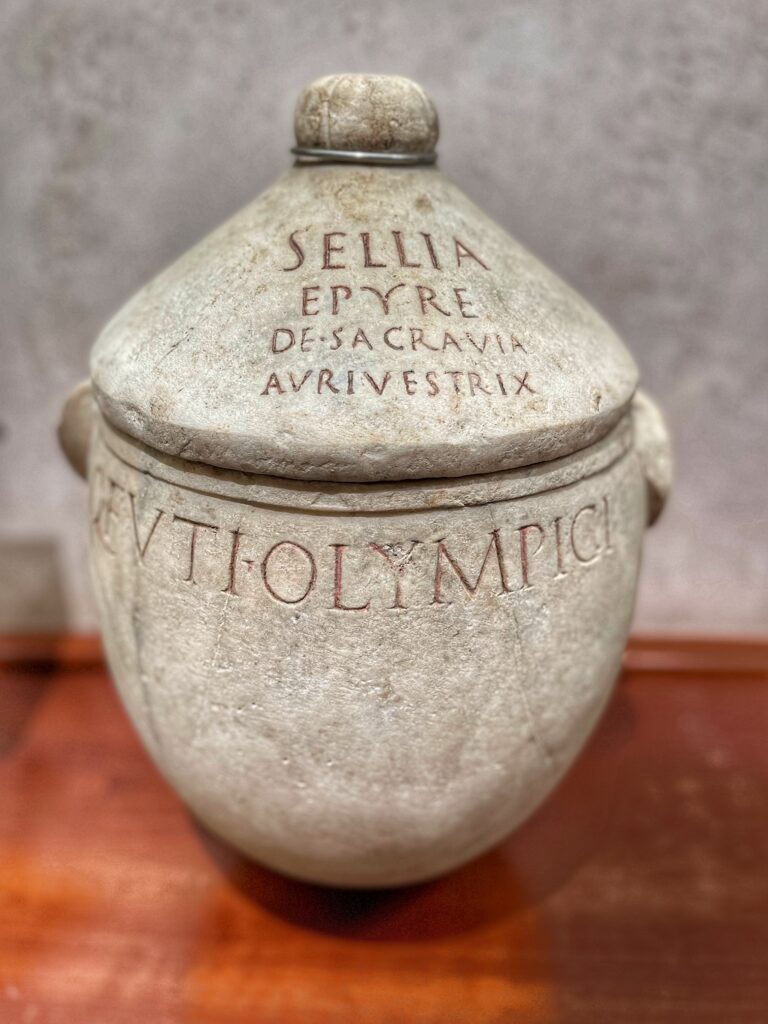
I also saw both ornate and simple urns. Like this one made for a woman who was a seller of robes embroidered in gold. She worked on the main road to the Roman Forum. Even this short description brought up an entire storyline of one vendor’s work in my head.
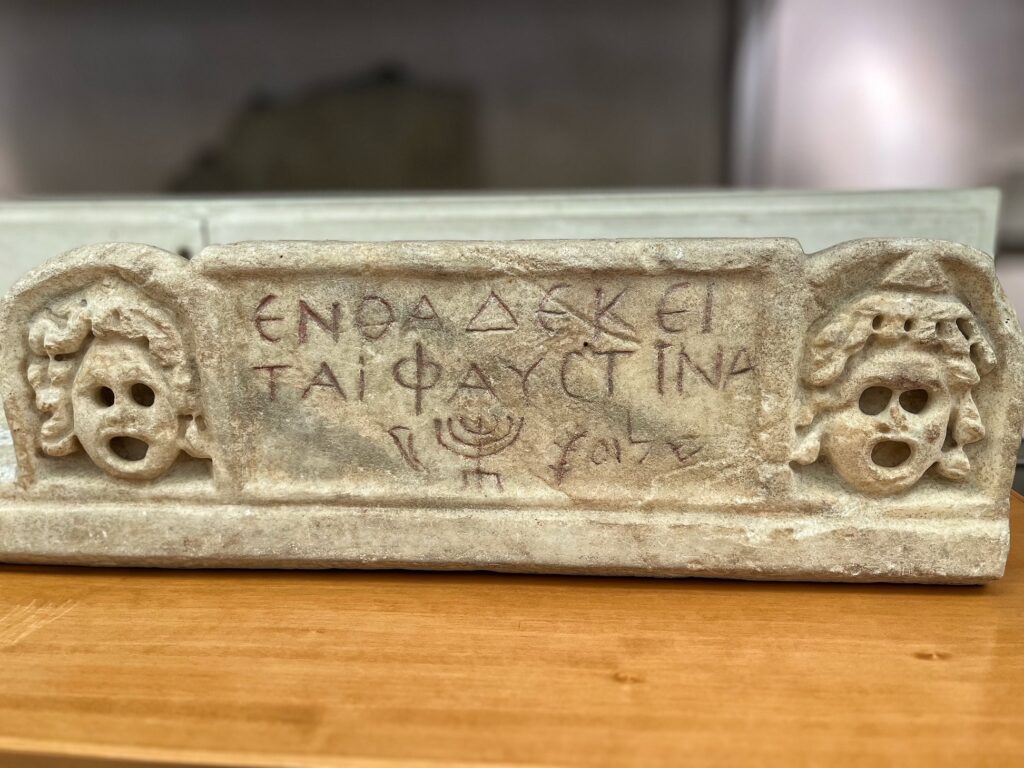
Or there was this line of a sarcophagus, decorated with theatre masks and the Jewish symbols of the menorah, horn and palm and the phrase “shalom” (this is what I read, I cannot decipher this last bit for myself).
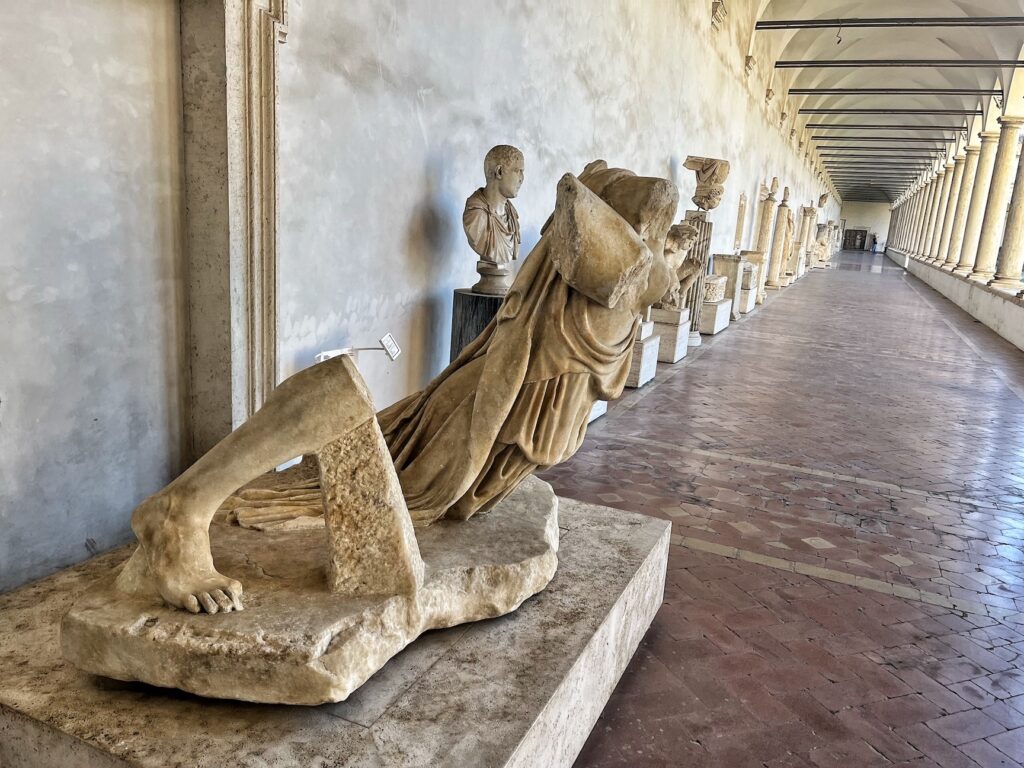
It was interesting to wander the expansive grounds (32 acres!) and not only marvel at the fact that this was once a spectacular Roman bath. Just as incredible was the sheer volume of retrieved objects that are now lined up as if you are at some kind of ancient yard sale. Row upon row, with most of the objects again serving as tributes to the dead. Juxtaposing this scene with what I saw in the crypt, somehow I found disembodied pieces of broken statues far easier to take in. Both tributes have their purpose, of course—however the reminder that life is ephemeral goes down a whole lot easier when you’re presented with monuments to humans in their prime over what they eventually crumbled into.
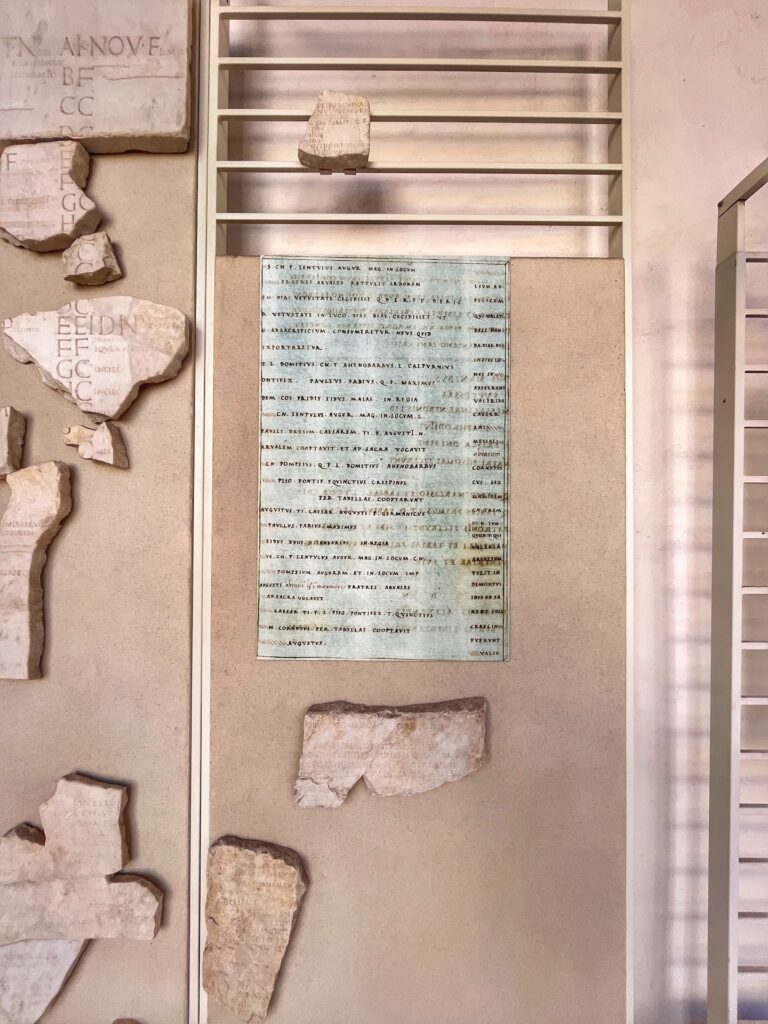
You have to hand it to humans of our modern day who have invested their brainpower and brought the past into the present. On this display I saw what looked like indecipherable shards of a tablet. But the reconstruction reveals that it was part of an annual record where incidents of import were copied down: “The year 14 AD: Report concerning an old tree that had fallen down in the sacred grove. It was decreed to burn it during a sacrifice, without removing any part of the trunk.” Nothing changes. This entry, in all of its timeless simplicity, really made me smile.
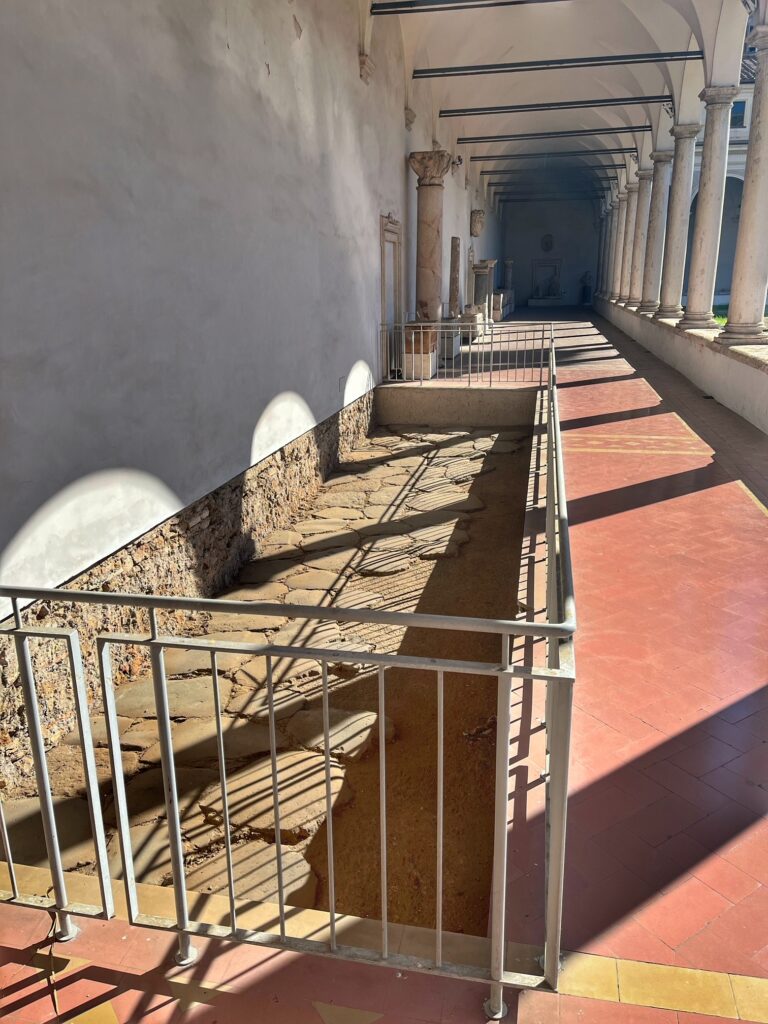
More than a heavy-handed (for me) crypt, the landscape of Rome on its own does a handy job of pointing to the now faceless people who have long-since passed through. And there are many spots where the city has graciously carved into the modern day “ground floor” to show you where life used to happen, down below where we now stand. This layer cake of existence makes you wonder how many inches up our descendants will be once we are all long gone. We’re just another step on the stairway and on days like these, it’s hard to pretend that we are anything more than a temporary passenger. But the reminders are important—and if anything else, my afternoon made me think about these days of the dead. The underlying reality that as a collective we all make a difference to the people in our community. I’ll take my trick-or-treat traditions, but I will happily lace them in with the more serious reminders of what our days ultimately become. After all, I’m not getting any older—and as I move along, trips like that one to the bone crypt feel less and less enticing.